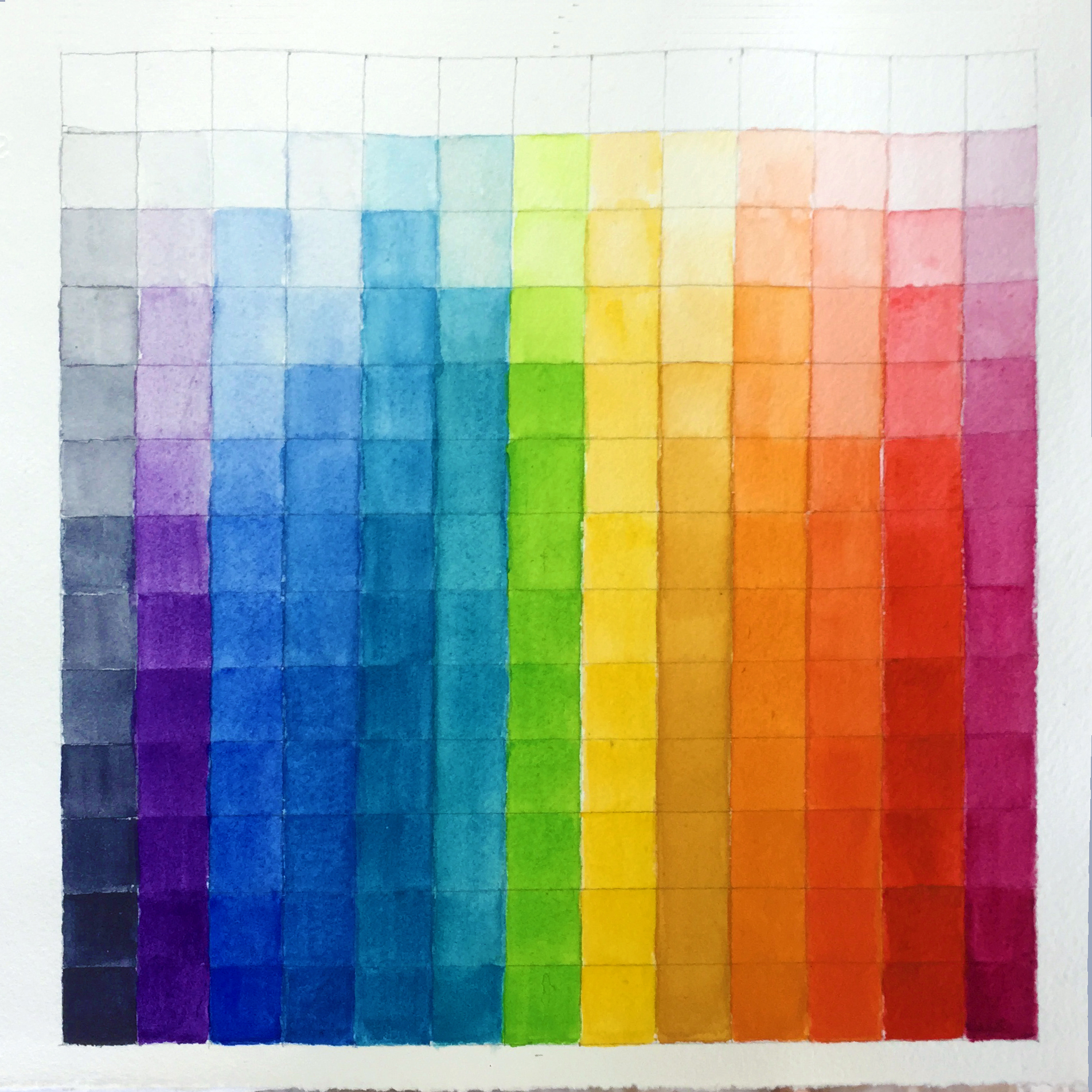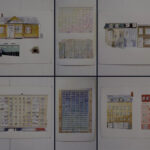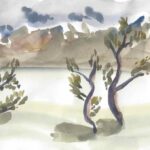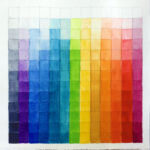In a famous photos of post-War Berlin, a city devastated by bombings and seemingly bereft of life, Berliners are seen planting vegetable gardens in the shadow of the Reichstag building. The Reichstag was to serve as a stage for one of the most iconic photographs symbolizing the end of World War II, where Red Army troops hoisted a Red Flag on one of the towers. It has become known as a victory banner (“Znamia Pobedi”). The photograph is black and white, so the colour of the banner must be filled in by the imagination. The photograph was staged, orchestrated by a war photographer, who carried with him a flag fashioned out of a tablecloth, and three soldiers who happened by (Griffin 1999:144). According to diverse and oftentimes contradictory sources (Ibid.; Dallas 2005), the original flag was hoisted above the Reichstag on the eve of the International Worker’s Day, on April 30, 1945.
Commemorating the Soviet victory, a memorial to over 2,000 Red Army soldiers who lost their lives overtaking the Reichstag was erected in the first six months following the end of the War. Another photograph shows the Memorial, built shortly after the War, positioned against a landscape still bereft of life; an oval-shaped colonnade capped with a large, bronze soldier. Each year, on May 9, people commemorate the end of the war by laying wreaths and flowers at the foot of the monument.
On May 9th, I walked up the white marble steps of the memorial. A middle-aged woman stood on the steps in a Soviet green military uniform and a triangular “pilotka” side cap, similarly fashioned out of olive-green canvas. She stood gripping a large red flag and a portrait of Stalin cradled in her arms. Children climbed on the artillery pieces like a jungle gym. The song “Victory Day” played on speakers. I sat down by a howitzer to paint a watercolour sketch of the monument. The red flag undulated in the wind, contrasted against the early spring greenery of the Tiergarten. That evening, I called my great-aunt in Moscow to congratulate her with Victory Day. During the War, she spent part of her childhood as an evacuee near Gorkiy (modern-day Nizhniy Novgorod). In War letters she sent to her mother—called “triangles,” because of the way they were folded—she writes about planting potatoes in the kolkhoz until her hands would bleed. She also recalled that well into her adult life, she had a recurring nightmare that as she walks along a field, she is accosted by a German aerial bombings. “You know, we just celebrated May 1st. When I was five or six, the neighbourhood kids would get up before sunrise. Our parents still slept, but at that time, soldiers were preparing for the big May Day parade.” The family lived near the Red Square, and the kids would run out onto the street to see soldiers, tanks, and artillery being prepared for the parade. The day prior, her mother would give her an allowance, and she would buy a red candy lollipop in the shape of a rooster, “we would run up to a soldier and ask to sit on a tank. They would lift us up, and I would sit, elated on top of the tank, sucking on my red lollipop.”
The Red Square is not really a square, but a large rectangle situated at the foot of the North-Eastern wall of the Kremlin. In the early 1930s, the seventeenth century Kazan Cathedral and the Resurrection gates were torn down to make way for heavy artillery during May Day parades. As one set of rituals replaced the other, so too was the Red Square subject to the vicissitudes of history. Since 1924, it was the burial site of the progenitor of the Russian Revolution, Vladimir Lenin. Initially constructed out of wood, the Mausoleum was a temporary structure that was meant to be replaced by a more permanent edifice. One such proposal came from Fyodor Schechtel, a pre-Revolutionary Art Nouveau architect nearing the end of his life, who proposed the Mausoleum as a pyramid akin to the burial site to Egyptian gods. The classical design was dismissed as an example of empty formalism. In 1930, the winning design was awarded to Aleksei Shchusev, turned one of the main architects of Stalinist “Empire” style. By the late 1930s, he was also pushed out of the Union of Soviet Architects. The glass sarcophagus was designed and built by the avant-garde architect Konstantin Melnikov, who was similarly pushed out of favour by the late 1930s.
At one point, all three architects were moved by early revolutionary ideas espoused by Constructivism. My namesake, Alexei Gan (no relation), proposed a new materialist form of architecture and art, “not to reflect, not to represent and not to interpret reality, but to really build and express the systematic tasks of the new class, the proletariat” (Gan quoted in Groys 2013). Constructivism was meant to carry out these goals, and according to Cathy Turner, it “presuppose[d] an economy of materials, without decoration. Its ‘effective’ and utilitarian aspect is also opposed to the aestheticism of the ‘composition’” (2015: n.p.). In early formulations Gan also rejected the work of an artist in favour of establishing “a scientific base for the approach of constructing buildings that would fulfill the demands of Communist culture in its transient state” (Gan 1974[1922]: 39). According to Turner, Gan proposed the “mass action” as an essential part of “establishing a new culture, through ritual and celebratory events” (Tuner 2015: n.p.). The May Day parade was to be a communist spectacle titled “The Communist City of the Future.” This “mass action” would comprise “the creation of an exemplary, if temporary, socialist city – theatrical, yet full-scale, functional and with designs on the real” (Turner 2015: n.p.).
All the main squares would be renamed for an art or science and decorated accordingly. There would be Geography Square, which would contain a huge globe, Astronomy Square, Political Economy Square, etc. In addition, there would [be] red flags and vitrines containing topical satires. (Romberg 2010:57)
In Gan’s words, the May Day parade was planned as a “script,” (stsenarii), (Romberg 2010:52) meant to fulfill the desire of the head of the Narkompros, Anatolii Lunacharsky—to “repeat the experiences of the October Revolution” (Romberg 2010:59). A ritual re-enacted, performed, in order to train the muscle memory of the workers of the nascent Soviet state. The spectacle never happened. Gan was pushed out of the People’s Comissariat of the Enlightenment (Narkompros) for radical ideas. He was executed in 1942.
During the Soviet period, May Day parades were made to “convincingly demonstrate the unbreakable union of the party and the people…” (Pravda May 2, 1981 quoted in Yurchak 2006:15). But as Alexei Yurchak argues, especially in the late Soviet period, “most people in the parades paid little attention to the slogans” (2006:15). These ideological representations, “documents, speeches, ritualized practices, slogans, posters, monuments, and urban visual propaganda—became increasingly normalized, ubiquitous, and predictable” (2006:14). As these symbols of the late Soviet epoch became more ubiquitous, their meaning began to wane: “the replication of the fixed and normalized forms of discourse became an end in itself…” (Ibid. 26). Ritual became theatrical; in a radical reversal of one of the most important credos of twentieth century architecture, whereby “form ever follows function” (Sullivan 1896: 408), form replaced function.
In 1915, the founder of Suprematism, Kazimir Malevich, painted the Black Square. A version of the Black Square, painted in oil on canvas, measures approximately 80cm x 80cm, and forms part of the permanent exhibition of the State Tretiakov Gallery in Moscow. Using basic geometric forms, Suprematism attempted to discover the “appropriate means of representation …. Which gives fullest possible expression to feeling as such and which ignores the familiar appearance of objects” (67). Suprematist art will “build up a new world—the world of feeling,” and will do so by “free[ing] art from the ballast of objectivity” (68). The square, to Malevich’s critics, “seemed incomprehensible and dangerous” (Malevich 1959[1913]:68). According to the artist, however, “a blissful sense of liberating non-objectivity drew me forth… This was no ‘empty square’ which I had exhibited but rather the feeling of non-objectivity” (Malevich 1959[1913]:68).
Boris Groys argues that it is incorrect to call artists of the 1920s, the Russian revolutionary avant-garde. The Revolution already happened, and these artists were not “revolutionary in the usual sense of the word, since the Russian avant-garde was not directed against the status quo… but affirmative in its attitude towards the post-revolutionary Soviet state” (Groys 2013). Rather, revolutionary art was carried out through artistic gestures preceding the Revolution, not as a creative process of rebuilding a new society—the task of post-Revolutionary artists—but a destructive one, as “the radical destruction of the existing society” (Groys 2013). Groys compares Malevich’s Black Square (1915) to “an open window through which the revolutionary spirits of radical destruction could enter the space of culture and reduce it to ashes” (2013).
In a painting dated to 1915, another, smaller black square is painted on a vertical, rectangular canvas covered in white paint. Below it, another square, red this time, smaller than the first and slightly askew, is positioned in the bottom-right half of the painting. A dating analysis has recently questioned the authenticity of Black Square and Red Square, although the style remains exemplary of the artist’s work. In the early 1980s, a Slovenian art collective, NSK, decided to pay homage to this, amongst other Russian avant-garde artworks. They “saw potential in repeating them in order to gain insight into where the avant-garde had gone wrong while building the future” (Vogelnik and Irwin 2014). Irwin members, all dressed in black suits, and with plenty of help from passersby and even a security guard on the Red Square, unfolded a twenty-two metre black canvas in an unsanctioned art performance on the Red Square in front of the Mausoleum.
In 1995, following German re-unification, a pair of artists Jeanne-Claude and Christo, wrapped the Reichstag building in fabric. This artistic gesture was similarly made to underline the importance of form over function. As I sit and paint a watercolour sketch next to a large howitzer positioned at the side of the monument, a man in a moustache approaches me to ask about the sketch. In the late 1980s, he served in the Soviet Army stationed in Berlin. He stayed after the last Russian troops left Geramany in the mid-1990s: “My wife is German,” he says by means of an explanation. He lives in a neighbouring town, but ritually comes to the Soviet memorial in Tiergarten each year, to commemorate the victory of the Red Army.
Literature cited
n.a.
“Black Square on Red Square.” KazimirMalevich.org. Accessed June 7, 2021. http://www.kazimirmalevich.org/black-square-and-red-square/
Dallas, Gregor
2005 1945: The War that Never Ended. New Haven: Yale University Press.
Griffin, Michael
1999 “The Great War Photographs: Constructing Myths of History and Photojournalism”. In Bonnie Brennen & Hanno Hardt eds., Picturing the Past: Media, History & Photography. (pp. 122–157). Urbana: University of Illinois Press. p. 144.
Groys, Boris
2013 “Becoming Revolutionary: On Kazimir Malevich.” E-flux No. 47, September 2013. Accessed online: https://www.e-flux.com/journal/47/60047/becoming-revolutionary-on-kazimir-malevich/
Hansa-Luftbild
1945 “Luftaufnahme des Tiergartens” (Aerial view of Tiergarten). Landesarchiv Berlin. Digital photograph: https://www.berlin.de/geschichte/historische-bilder/suche/index.php?popup&place=Tiergarten&page=8
Malevich, Kazimir.
1959 The Non-Objective World. Translated from the German by Howard Dearstyne. Chicago: Paul Theobald and Company.
Romberg, Kristin.
2010 Aleksei Gan’s Constructivism, 1917-1928. PhD Dissertation. Columbia University.
Steinhäuser, Rudolf
1947 “Gemüsegärten im Tiergarten” (Vegetable garden in Tiergarten). Landesarchiv Berlin. Digital photograph: https://www.berlin.de/geschichte/historische-bilder/suche/index.php?popup&place=Tiergarten&page=12
Sullivan, Louis
1896 “The Tall Office Building Artistically Considered.” Lippincott’s Magazine (March 1896): 403 – 409.
Turner, Cathy
2015 Dramaturgy and Architecture: Theatre, Utopia and the Built Environment. London: Palgrave Macmillan.
Vogelnik, Borut
2014 “Irwin on Malevich.” Tate Etc. 2 August 2014. https://www.tate.org.uk/tate-etc/issue-31-summer-2014/irwin-on-malevich
Yurchak, Alexei
2006 Everything Was Forever, Until It Was No More: The Last Soviet Generation. Princeton: Princeton University Press.
Read more posts:
- Приглашение на антропологический/художественный проект
- On Race Cars and Enlightenment
- Artists Books
- Hand Gestures
- Red Square





